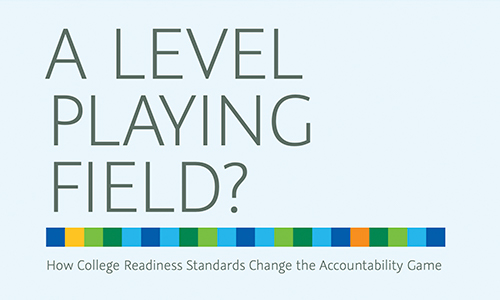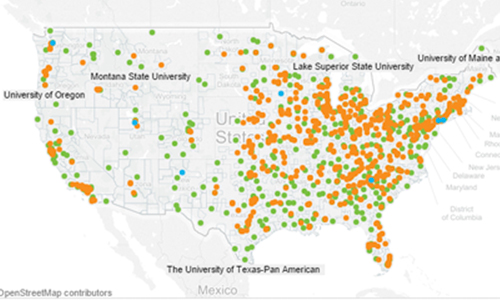Media mention
Study: Summer school for EL students could boost 4-year graduation rates
November 2019
Education Dive

Description
A summer school program for high school English learners who have lived in the U.S. for less than three years increased the number of core courses those students took that are required for graduation.
Go to articleAssociated Research

Journal article
Related Topics


Do high flyers maintain their altitude?
In the visualizations in this exhibit, you can compare the performance and growth of various groups of high achievers to that of their peers over multiple years.
By: Yun Xiang, Michael Dahlin, John Cronin, Robert Theaker, Sarah Durant
Topics: Equity, High-growth schools & practices


A level playing field: College readiness standards
Some of our assumptions about the growth and performance of students from high-poverty schools relative to their peers from wealthier schools may be challenged in this data gallery, where you can explore how school poverty level interacts with student growth, college readiness, and college access.
By: Michael Dahlin, Beth Tarasawa
Topics: Equity, College & career readiness


A level playing field: College readiness standards
This study examines the academic growth of 35,000 elementary and middle school students in 31 states—all of them high achievers within their own schools—over a three-year period.
By: Michael Dahlin, Beth Tarasawa
Topics: Equity, College & career readiness


Developing more meaningful definitions of college readiness
Complementing traditional quantitative measures with more qualitative tools can help determine college and career readiness.
By: John Cronin, Michael Dahlin


Do high flyers maintain their altitude? Performance trends of top students
In this study from the Thomas B. Fordham Institute, achievement trends from NWEA’s longitudinal growth database were used to track students who scored at or above the 90th percentile on this assessment in order to see if they maintained their high achievement.
By: Yun Xiang, Michael Dahlin, John Cronin, Robert Theaker, Sarah Durant
Topics: Equity, High-growth schools & practices


Increasing parental involvement of English language learner families: What the research says
The nearly 10 million English Language Learners (ELLs) represent the fastest-growing segment of the US’s public school student population. While research continually finds that ELL parents, generally speaking, place a high value on their children’s education, many immigrant, refugee, and ELL parents experience their relationships with their children’s schools very differently from mainstream English-speaking families.
By: Beth Tarasawa, Jacqueline Waggoner


Mapping the road to college with the College Explorer tool
NWEA recently launched a new tool called College Explorer that enables middle school and early high school-age students to use their Measures of Academic Progress ® (MAP®) scores to see which colleges and universities they’re on track to enter long before they embark on the college application process.
By: Greg King
Topics: Innovations in reporting & assessment, College & career readiness, High school


